Snakes are infamous for being predators, which is why it’s hard to imagine them being prey to anyone. In this article, you’ll learn all about the animals that fearlessly prey on snakes.
So, what animals eat snakes? A variety of animals feast on snakes, ranging from mammals to other snakes. The list includes the following:
- Mongoose
- Red-tailed Hawk
- Wolverine
- Crocodiles
- Snake Eagle
- Fox
- Laughing Falcon
- Hedgehog
- Owl
- Tiger
- Snapping Turtle
- Bobcat
- Secretary Bird
- Kingsnake
- Honey Badger
- Scottish Terrier
However, this list is just the tip of the iceberg. There are so many animals that eat snakes, and this article will help you identify them. If you’re looking for animals that can help you with a snake problem – or if you’re just curious – then you came to the right place.
Table of Contents
What Animals Eat Snakes?
Mongoose
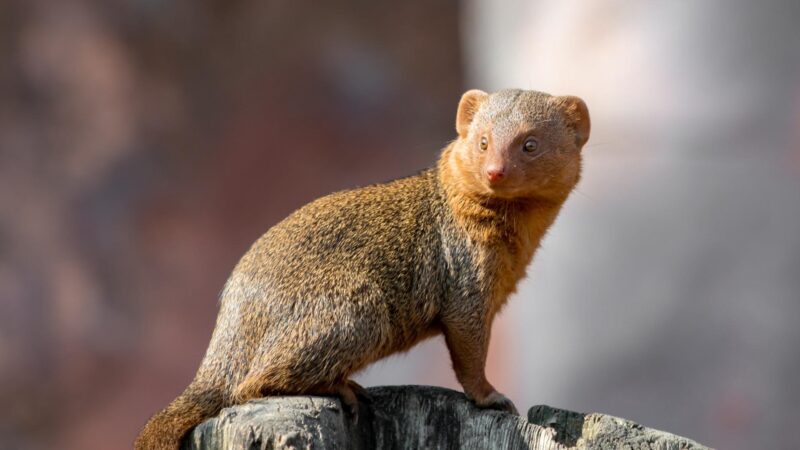
A mongoose may be small, but it’s more than capable of killing and eating a snake – especially when they’re threatened. This mammal has sharp teeth and powerful claws that can crack a snake’s skull effortlessly. Mongooses are also quick on their toes, and that allows them to catch an elusive snake.
- Appearance: A mongoose is a small mammal with brown and gray bristle-like hair all over its body. It has notably short legs compared to the rest of its slender body. As for its face, it has a long pointed nose and a pair of small rounded ears. This mammal is also known for its long, bushy tail.
- Lifespan: 6 to 10 years
- Height: Up to 2 feet
- Weight: 1 to 11 pounds
- Color: Light brown, brown, gray
- Place Of Origin: Africa, South Asia, West Asia
- Characteristics: Burrowing, solitary, diurnal
Red-Tailed Hawk
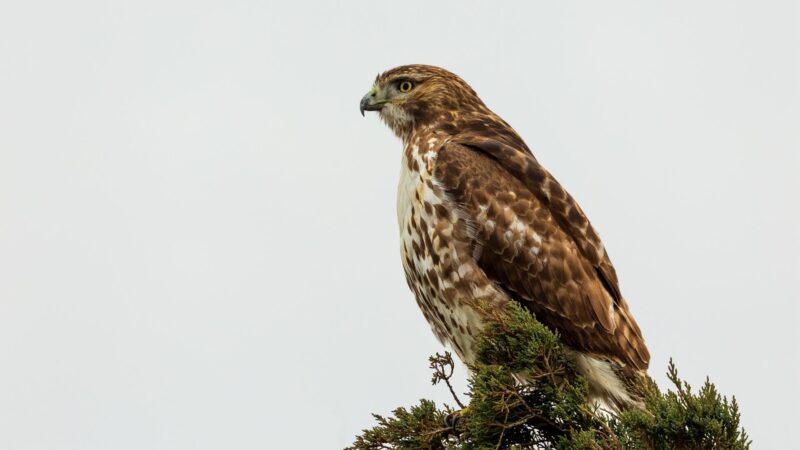
The red-tailed hawk is among the birds known to prey on snakes. This hawk is an exceptional hunter and can easily spot and catch a snake with its sharp talons. It feasts on the snake while perched on a branch to afford its prey with no means to escape.
- Appearance: As its name implies, the red-tailed hawk has a distinctive tail feather color – a bright copper or cinnamon-red if seen from above and a pale red-brown if seen from below. This medium-sized bird has brown feathers on the upper part of its body while the under part of its body consists of white feathers.
Additionally, its wings are outlined by black feathers, which emphasizes its impressive wingspan. It has a pair of strong and sharp talons that can easily grab its prey. Like other hawks, it also has a curved yet pointed beak.
- Lifespan: 10 to 20 years
- Height: 24 to 26 inches
- Weight: Up to 3.5 pounds
- Color: White and brown
- Place Of Origin: Nearctic region
- Characteristics: Territorial, aggressive, diurnal
Wolverine
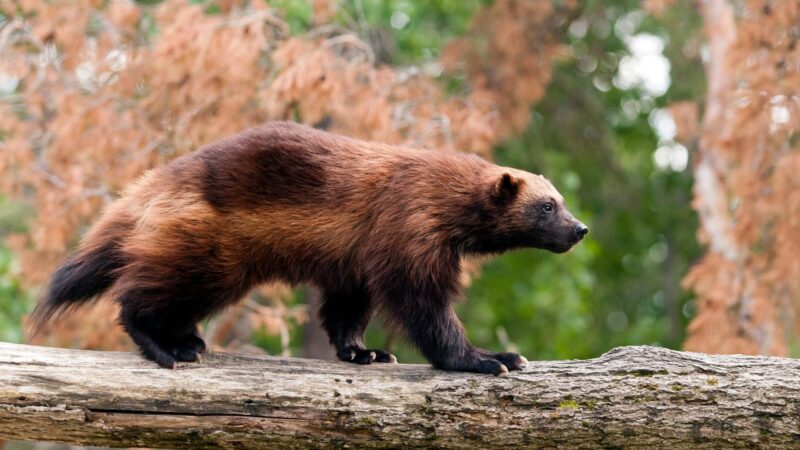
Wolverines are predatory mammals that are known for their impressive speed and agility. These large weasels also have quite a thick coat, which can easily shield against a snake’s retaliations. They also have muscular and powerful claws that can easily catch and tear their prey.
- Appearance: Although the wolverine is the largest member of the weasel family, its resemblance with bears is quite uncanny. It has a stocky body with brown and red shaggy fur all over, a long snout, and a pair of small ears on top of the head. It stands on four large legs that are covered in dark brown fur. The biggest difference between wolverines and bears is that the former is noticeably smaller with a long, furry tail.
- Lifespan: Up to 13 years
- Height: 2.5 to 3.7 feet
- Weight: 25 to 40 pounds
- Color: Dark brown, brown, black, and dark brown
- Place Of Origin: Asia, Europe, North America
- Characteristics: Solitary, carnivorous
Crocodiles
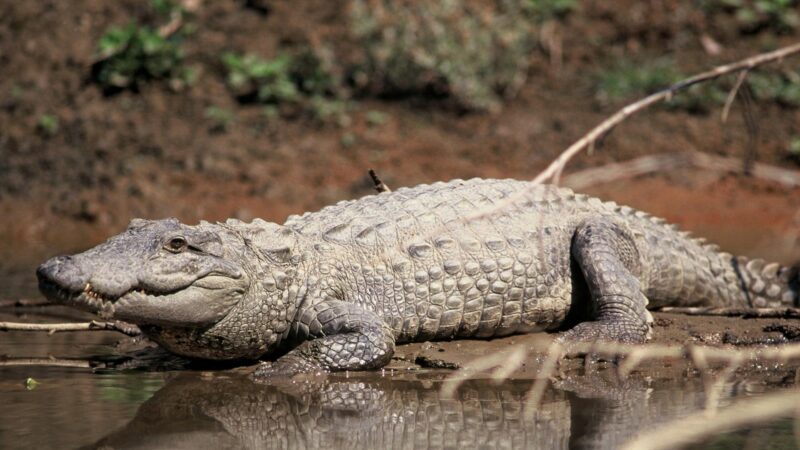
It comes as no surprise that crocodiles eat snakes. With their large mouths and sharp teeth, these amphibians can easily munch on an unsuspecting snake that comes close to it. These predatory reptiles are incredibly fast on water, which makes it easy for them to catch snakes swimming nearby.
- Appearance: Crocodiles are reptiles that are covered in pointy scales across the top of their bodies. In contrast, their underbelly is covered in smooth white scales that allow them to easily crawl on land. They have a noticeably broad body and a thick tail, coupled with two pairs of short legs. To tell them apart from alligators, crocodiles have a more v-shaped snout and a jawline that has no overbite.
- Lifespan: 60 to 70 years
- Height: Up to 19 feet
- Weight: Up to 2,200 pounds
- Color: Light olive green, light olive brown, light brown
- Place Of Origin: Australasia, Africa
- Characteristics: Aggressive, amphibious, carnivorous
Snake Eagles
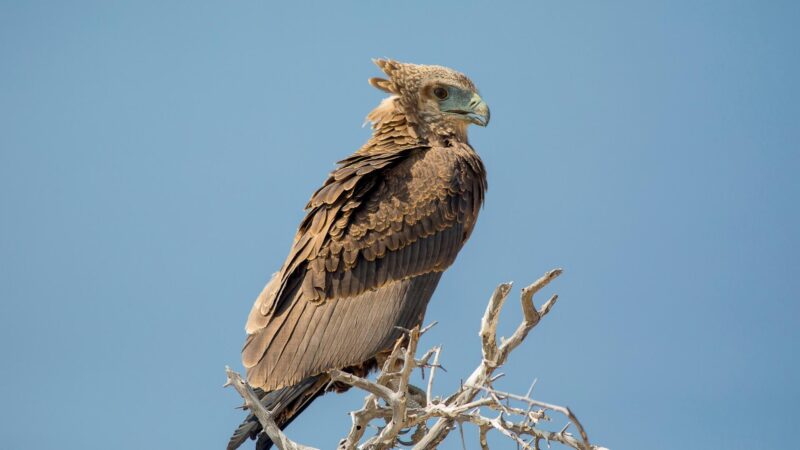
As its name implies, the snake eagle is a bird that preys on snakes. This eagle is known for its speedy hunting moves, usually swooping down to grab the prey with its talons and crushing its head to minimize danger to itself.
- Appearance: The snake eagle has light brown to brown feathers covering its body. In some snake eagle species, this bird has white or silver feathers under its belly, wings, and tail. Like most eagles, this bird has a rounded head with angular facial features. It has a curved yet pointed beak and a pair of visibly yellow eyes.
- Lifespan: 7 to 10 years
- Height: 2 to 2.5 feet
- Weight: 3 to 5 pounds
- Color: Brown, dark brown, dark and light brown, dark brown and white, black and white, grayish brown
- Place Of Origin: Africa, Asia
- Characteristics: Solitary, diurnal
Fox
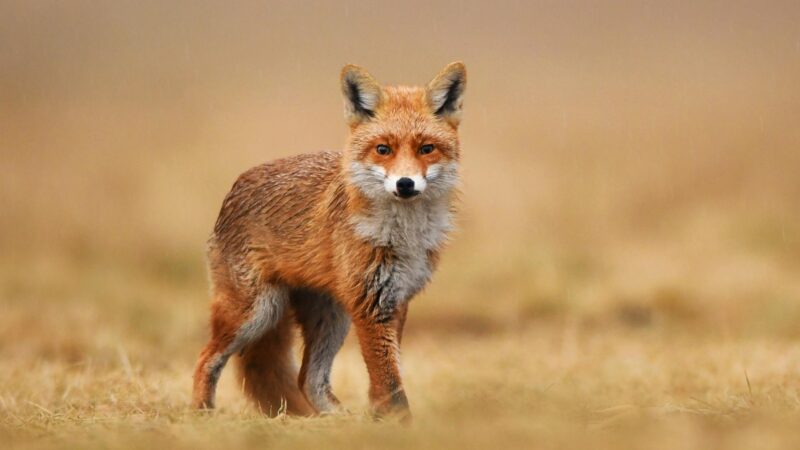
Foxes are known predators, so it’s no surprise that they prey on snakes from time to time. This nocturnal animal is known for being an opportunistic hunter – ready to pounce at a snake that unfortunately tries to slither by. Because foxes hunt mostly when it gets dark, they have developed impressive senses of sight, smell, and hearing to help them catch their prey.
- Appearance: Foxes are known for their dog-like bodies with long and fluffy white-tipped tails. This animal has pointed ears, as well as a long and pointed nose. As for the fur color, it depends on the species, but most foxes have reddish-brown, gray, or white fur.
- Lifespan: 3 to 4 years
- Height: 35 to 45 inches
- Weight: Up to 31 pounds
- Color: Red, gray, white, light brown
- Place Of Origin: Eurasia
- Characteristics: Nocturnal, cunning, burrowing
Laughing Falcon
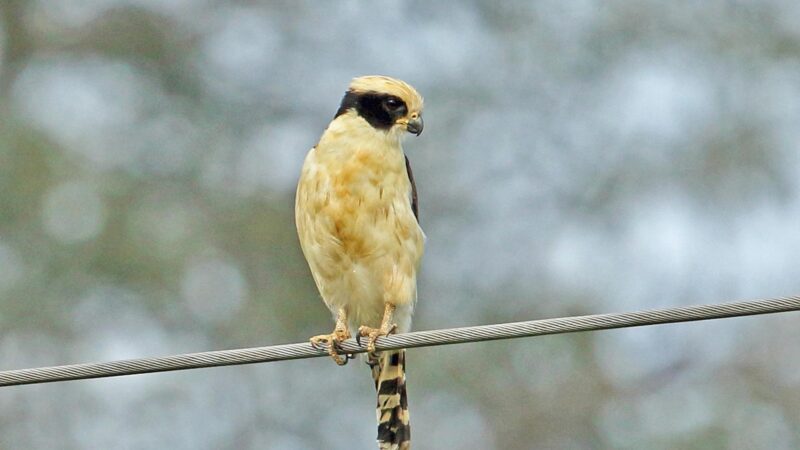
Another predatory bird that preys on snakes is the laughing falcon. Otherwise known as the snake hawk, this bird is known for its hunting style that can instantly decapitate its snake prey. It uses its strong bill to swoop down and target the snake near its head – unlike other birds that use their talons. It’s also interesting to note that this bird is named as laughing falcon because of its loud call that sounds like a human laugh.
- Appearance: The laughing falcon has a distinct black mark on its face starting from one eye that goes around the back and ends on the other eye. Its body is covered in white feathers, except for its distinctively brown wings. Additionally, its tail feathers have distinct brown and white stripes. Like other falcons, this bird also has a short, curved, yet pointed beak.
- Lifespan: 14 years
- Height: Up to 2.2 feet
- Weight: 1 to 1.8 pounds
- Color: Black, dark brown, off white
- Place Of Origin: Central America, North America
- Characteristics: Noisy, neotropical, solitary
Hedgehog
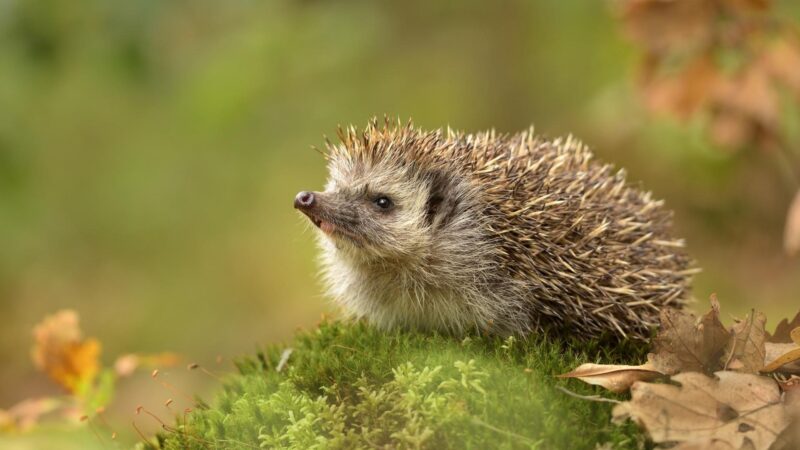
A hedgehog may be small, but it is also capable of killing and eating snakes like vipers. What’s interesting is that a hedgehog is immune to snake venom. It allows them to attack and devour snakes without causing harm to themselves.
- Appearance: Hedgehogs are tiny mammals without stout bodies and tiny limbs. Its most notable feature is its back that’s filled with spikes called quills. In contrast, the rest of its body is covered in short, soft fur. The hedgehog has a long pointed snout and a pair of small rounded ears.
- Lifespan: 2 to 5 years
- Height: 6 to 12 inches
- Weight: 20 to 56 ounces
- Color: Light brown and white, dark brown and white, gray-brown
- Place Of Origin: Europe, Africa, Asia
- Characteristics: Nocturnal, solitary
Owl
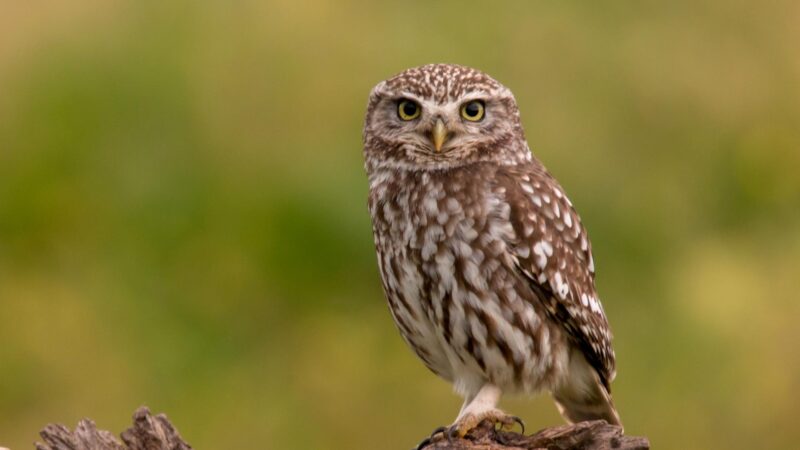
Surprisingly, some owl species are known for specifically feeding on snakes – including the eastern screech owl and the great horned owl. Being nocturnal, this bird hunts at night and would grab an unsuspecting snake with its powerful talons.
- Appearance: Owls have distinctively large and rounded heads compared to other birds of the same size. But despite the large head size, owls have a small narrow beak that visibly curves downward. They also have forward-facing eyes – also known as a binocular vision – just like humans.
Owls come in a variety of colors, which may be brown, tan, or white. Nevertheless, most owls have a distinctive plumage of brown and white that helps them camouflage around trees.
- Lifespan: 5 to 12 years
- Height: 2 to 2.4 feet
- Weight: Up to 10 pounds
- Color: Brown, tan, brown and white, gray-brown, reddish-brown, white
- Place Of Origin: Asia, North America, South America, Africa, Europe, Oceania
- Characteristics: Nocturnal, binocular vision, solitary
Tiger

Tigers are among the most fearsome predators and are known to devour snakes. This large cat has powerful jaws and 3-inch fangs that could easily kill its prey. Tigers are great hunters, known to stalk and study their target before pouncing to attack.
- Appearance: Tigers are known for the black stripes that run all over its body. But, what’s interesting is that these stripe patterns are unique for each certain tiger – no two are the same. The upper half of its body is covered in orange fur, while the underbelly has white fur. This large cat has small rounded ears, a long tail, and muscular legs.
- Lifespan: 8 to 10 years
- Height: 4 to 9 feet
- Weight: 300 to 660 pounds
- Color: Orange and black, white and black
- Place Of Origin: Northwestern China
- Characteristics: Aggressive, solitary
Snapping Turtles
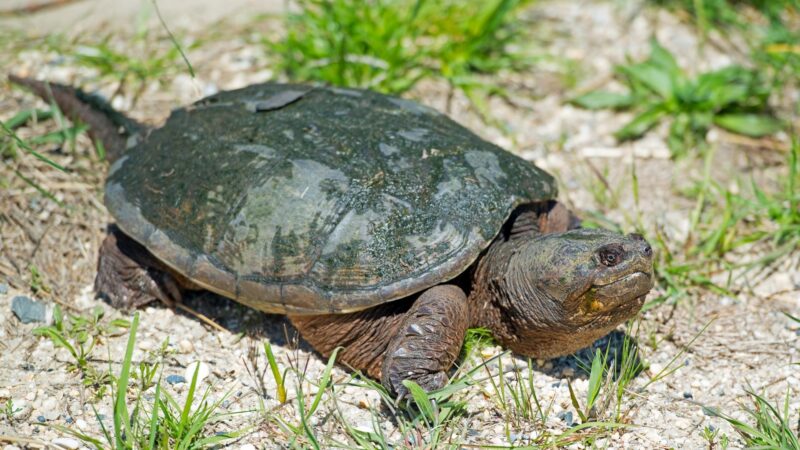
Among the turtle species, the snapping turtle has the reputation of being a fearless predator. With its beak-like jaw, this turtle can easily gnaw off a snake’s skin and devour it. The snapping turtle is also quite fast underwater, so any snake that comes in its way can instantly be prey.
- Appearance: Snapping turtles are easily identifiable because of their beak-like jaws. While the common snapping turtle has a noticeably rough shell, the alligator snapping turtle has more visible horns on its shell. Unlike other turtles, snapping turtles also have longer tails with visibly horned scales.
- Lifespan: 50 to 75 years
- Height: 8 to 14 inches
- Weight: 15 to 35 pounds
- Color: Dark gray, tan, black
- Place Of Origin: North America, Central America
- Characteristics Aggressive, combative, scavenger, solitary, nocturnal
Bobcats
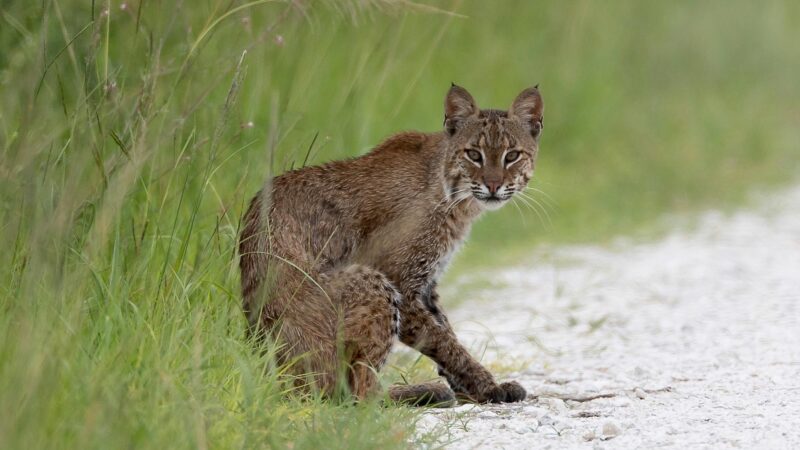
The bobcat is another wild cat that is known to devour snakes. This predatory feline is known for its stealth-hunting moves. They’re incredibly patient, often stalking their prey for up to 7 miles before it pounces to attack. The bobcat is known for its strong legs, which makes it an excellent climber and runner, with running speeds of up to 30 miles per hour.
- Appearance: Bobcats have iconic black rosette marks like a leopard. While the bobcat is much smaller than a leopard, it’s still twice the size of the regular house cat. To further distinguish bobcats from other felines, it can be observed that these cats have pointy black-tipped ears and black bars of fur on their legs and tail.
- Lifespan: 15 to 18 years
- Height: 18 to 35 pounds
- Weight: 32 to 37 inches
- Color: Reddish-brown, gray-brown, light brown
- Place Of Origin: North America, Central America
- Characteristics: Cautious, territorial, non-aggressive
Secretary Bird
The secretary bird is another bird species that kills and eats snakes. While it may not look intimidating, this bird is called the “killer queen” for a reason. This flightless bird has incredibly strong legs that can exert around 44 pounds of force in one kick. These legs are incredibly fast as well. That’s why these birds are known to stomp on the heads of their prey until they crush and kill it.
- Appearance: The secretary bird has an iconic crest of black quill-like feathers. Its upper body is covered in snow-white feathers, while its lower body, as well as the tip of its wings, is covered in black feathers. This elegant bird has an incredibly long pair of legs that helps it move elegantly.
Among the flightless birds, the secretary bird has one of the most eye-catching faces. It has a bright orange mask around the eyes that gradients to yellow as it draws closer to the base of its white beak. To bring all its facial features together is a pair of big round eyes with long eyelashes.
- Lifespan: 15 to 19 years
- Height: 4 to 5 feet
- Weight: 5 to 10 pounds
- Color: Black and white
- Place Of Origin: Africa
- Characteristics: Non-aggressive, flightless, diurnal
Honey Badger
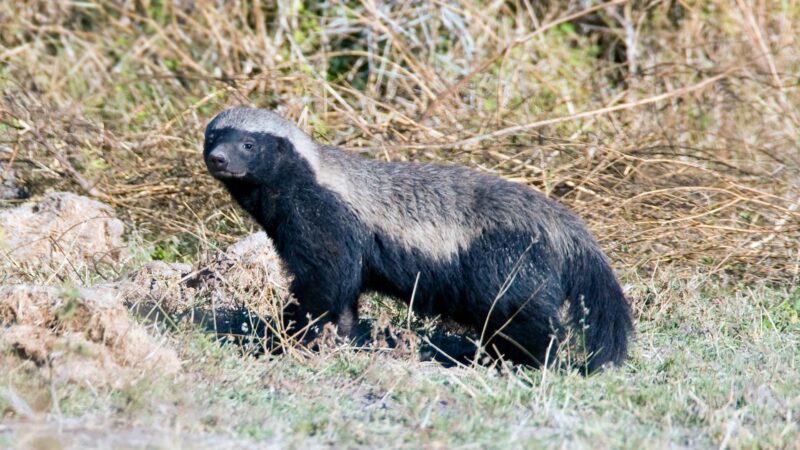
While its name may not be intimidating, the honey badger is surprisingly strong and is capable of killing snakes. Once dubbed as “the most fearless animal in the world,” this animal mainly feasts on honey but does not shy away from eating snakes if it has to.
Like a skunk, this animal has anal glands that secrete a pungent smell to ward off its enemies. In addition to that, it also has powerful claws and teeth that can crack even the toughest of shells. Interestingly, honey badgers have developed an immunity to snake venom. That’s one of the reasons why it has no problem with catching snakes.
- Appearance: Honey badgers have elongated bodies with a broad patch of white or silver-gray fur running from above the eyes to their backside. This is in contrast to the black fur on their sides and underbelly. This feisty mammal has four plump, muscular legs and a short yet fluffy tail. Also, they have long and sharp claws, which are especially noticeable on the toes of their forelegs.
- Lifespan: Up to 24 years
- Height: 9 to 11 inches
- Weight: 13 to 30 pounds
- Color: Black and white, black and light gray
- Place Of Origin: Africa, Asia
- Characteristics: Aggressive, terrestrial, solitary, fearless
Kingsnake
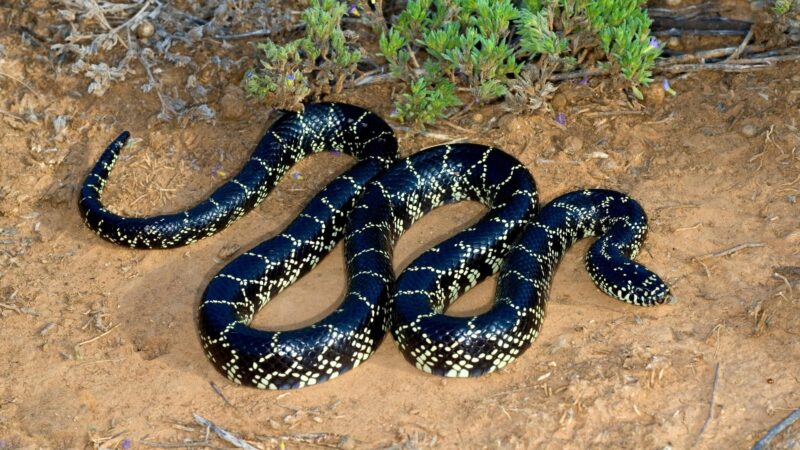
The kingsnake is the most popular snake breed that’s known to feast on other snakes. While it’s not the largest snake in the ecosystem, it’s known to prey on snakes up to 20% larger than its size. It does so by grasping the prey near the head and squeezing it until it dies.
Interestingly, the kingsnake is also immune to the venom of some snakes, which is how they can continue attacking despite counterattacks. This makes it clear why it’s aptly named the kingsnake.
- Appearance: A kingsnake has smooth and shiny scales covering its entire body. It has predominantly red scales with notable black and white bands all over. On the other hand, some kingsnake species have predominantly black or dark brown scales with white bands across the body.
- Lifespan: 10 to 15 years
- Height: 3 to 6 feet
- Weight: Up to 3.3 pounds
- Color: Red, black, and white
- Place Of Origin: North America
- Characteristics: Diurnal, terrestrial, solitary
Scottish Terrier

It may come as a surprise that an adorable dog such as the Scottish terrier is capable of killing snakes. But looking at its history, the terrier breed has always been raised as hunting dogs. That’s why this feisty little canine is always ready to pounce and attack its slithering enemy. So if you’re planning to keep a pet to keep your farm free from predatory snakes, the Scottish terrier will serve as the perfect watchdog.
- Appearance: The Scottish terrier is a small dog breed that stands around 10 inches tall. It has a long, wiry topcoat that’s often groomed to give it a boxy appearance. It has a short set of limbs and a long slender tail that makes it look like this dog is always alert. The Scottish terrier has a pair of long pointy ears perched on top of its head and a face that’s framed by a noticeable beard.
- Lifespan: 12 to 15 years
- Height: Up to 10 inches
- Weight: 18 to 22 pounds
- Color: Black, brindle, wheaten, red brindle
- Place Of Origin: Scotland
- Characteristics: Alert, playful, loyal, energetic
Frequently Asked Questions
Will a Goat Eat a Snake?
Goats will not eat a snake. It must be noted that goats are herbivores, so their diets consist only of vegetation. This is due to their stomachs being incapable of digesting food other than plants.
Do Owls Eat Snakes?
Owls eat snakes. While an owl’s diet mostly consists of small animals and insects, this bird of prey also eats snakes when given the chance. Nevertheless, some owl species, like the great horned owl and the eastern screeching owl, are known mainly for hunting and eating snakes.
Can Snakes Eat Other Snakes?
Snakes can eat other snakes. Snakes are carnivores who often prey on rodents and small mammals, but snake species like the kingsnake and the king cobra mainly feed on other snakes for survival.
Can Humans Eat Snakes?
Humans can eat snakes. Snake meat is a popular exotic food in some cultures and is even believed to have medicinal properties. But while it’s believed to be low in fat and rich in protein, much emphasis is placed on the proper way of cooking them since improperly cooked snake meat can cause infections.
Do Ants Eat Snakes?
Some ant species eat snakes. Ants are omnivores and can eat anything from plants to meat, including snake meat. Ants have been observed to eat snake carcasses, although how they managed to kill a snake remains unknown.
While snakes are feared for being vicious predators, it’s interesting to know that they also fall prey to some animals. It is no surprise that foxes, tigers, and crocodiles feast on these animals. What’s fascinating is that even small animals such as hedgehogs, mongooses, and the ever-loyal Scottish terrier are also capable of eating them. This goes to show how nature maintains the earth’s biological diversity.
List of Sources
The Fast and Forceful Kicking Strike of the Secretary Bird
Traditional Use and Perception of Snakes by the Nahuas From Cuetzalan Del Progreso, Puebla, Mexico